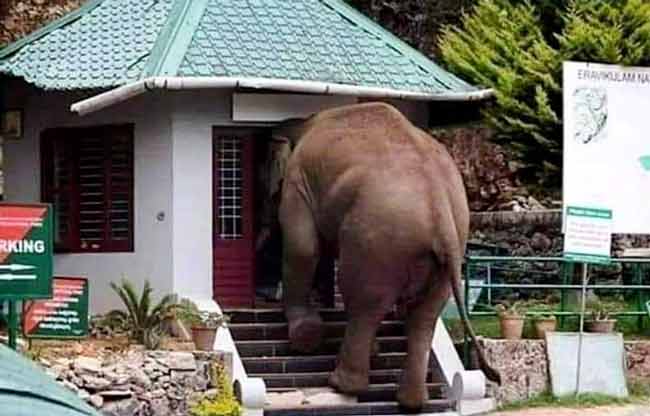
Photo courtesy Davidson Sargunam >>
Keeping man-animal conflict at bay
Lookout towers have been put up inside Neyyar, Peppara, and Agasthyavanam forests to spot wild animals.
At 6 a.m. on all days, except Sunday, Bhagavan Kani, a forest tribal, clambers up a narrow bamboo ladder to get to a watch house atop a tall tree deep inside the Neyyar Wildlife Sanctuary to keep a look out for wild elephants.
The thatched “tree-house,” roughly at the height of a coconut palm, is a bamboo structure put up to help forest watchmen spot wild elephants and warn indigenous forest dwellers from inadvertently stumbling into the path of the foraging wild herds.
From his overhead vantage post, Bhagavan can scan a considerably vast expanse of the semi-deciduous evergreen forest. When he spots elephant herds, lone tuskers, sounders of wild boars or gangs of wild buffaloes in the dense undergrowth, he gives a shrill call to warn tribal people of wildlife presence. […]
Wednesdays and Saturdays are particularly busy days for Bhagavan. On these days, scores of tribal people, including women and children, trek up to 17 km to reach the local market at Kottoor to sell “kasturi manjal” (Curcuma aromatica), honey, banana, tapioca, yam, pineapple and lime. […]
Wildlife enforcers say that with summer peaking, elephant herds, boar and gaur are likely to move to the fringes of the forests. The smell of ripening jackfruit and pineapple near human habitations seem to draw them. For forest dwellers and guards, summer means heightened vigil to prevent potentially lethal human-wildlife conflicts.
Source: The Hindu : Cities / Thiruvananthapuram : Keeping man-animal conflict at bay by G. Anand (The Hindu Thiruvananthapuram, 26 February 2012)
Address : https://www.thehindu.com/news/cities/Thiruvananthapuram/article2934928.ece
Date Visited: 1 December 2020
“What we are telling to the outer world is that no conservation would be possible without cooperation of the local community [and] integrating their traditional wisdom with modern-day scientific approach.” – WWF’s Kerala consultant KH Amitha Bachan | Learn more: Biodiversity | Climate change | Ethnobotany & ethnomedicine | Nature and wildlife | Sacred grove | United Nations on climate change >> >>
See also
Accordweb.in | Accord | Articles by co-founder Mari Marcel Thekaekara | Shola Trust
Atree.org | Ashoka Trust for Research in Ecology & the Environment (posts)
Climate change | Audio | The Climate Question (BBC Podcast)
Environmental history and what makes for a civilization – Romila Thapar
Equations blog (Equitable Tourism Options)
Information provided by Indian government agencies and other organizations (FAQ)
Nature and wildlife | Crocodile | Elephant | Tiger | Mangrove forest | Trees
PARI’s tales from tiger territory | People’s Archive of Rural India (PARI)
United Nations on climate change
What is the Forest Rights Act about?
Who is a forest dweller under this law, and who gets rights?